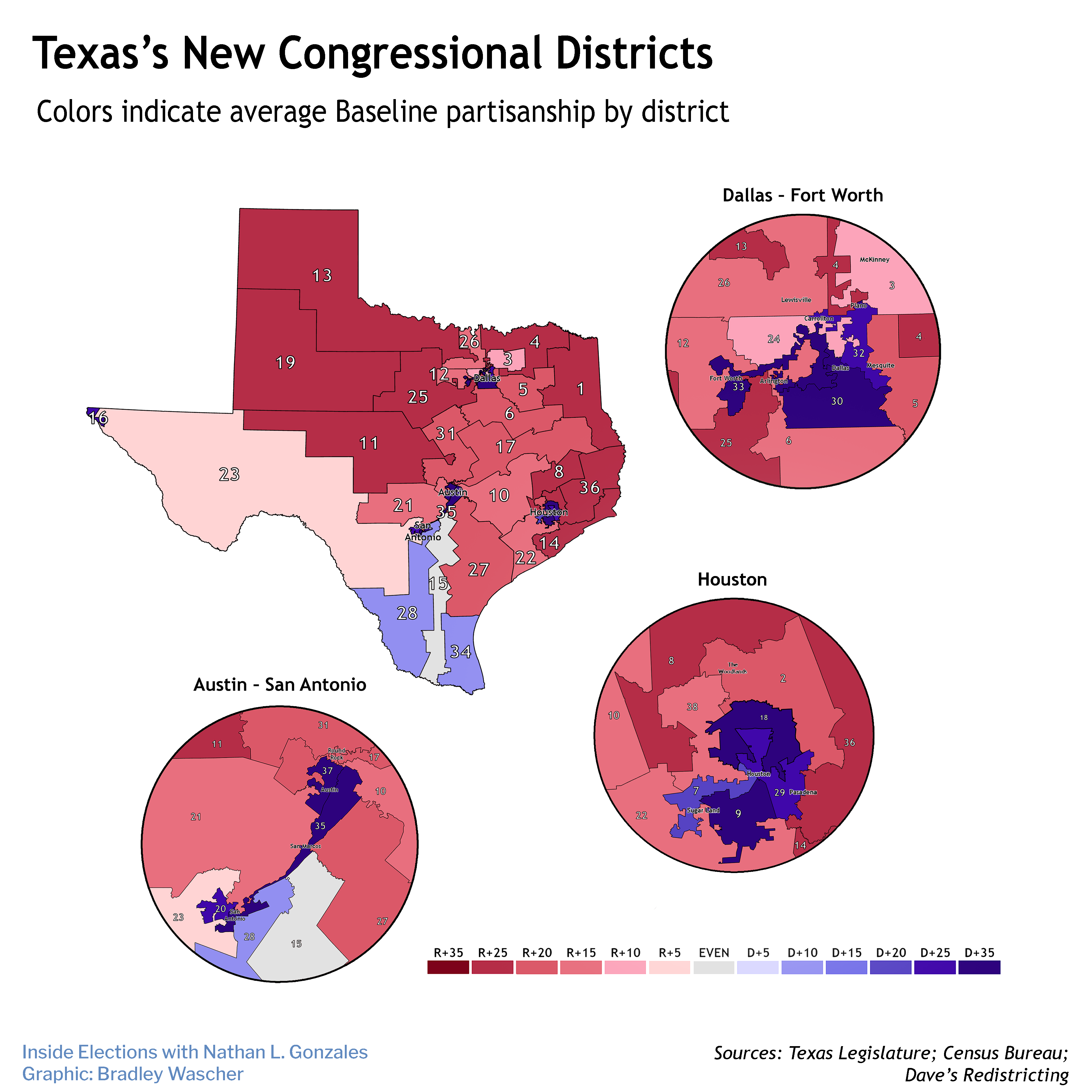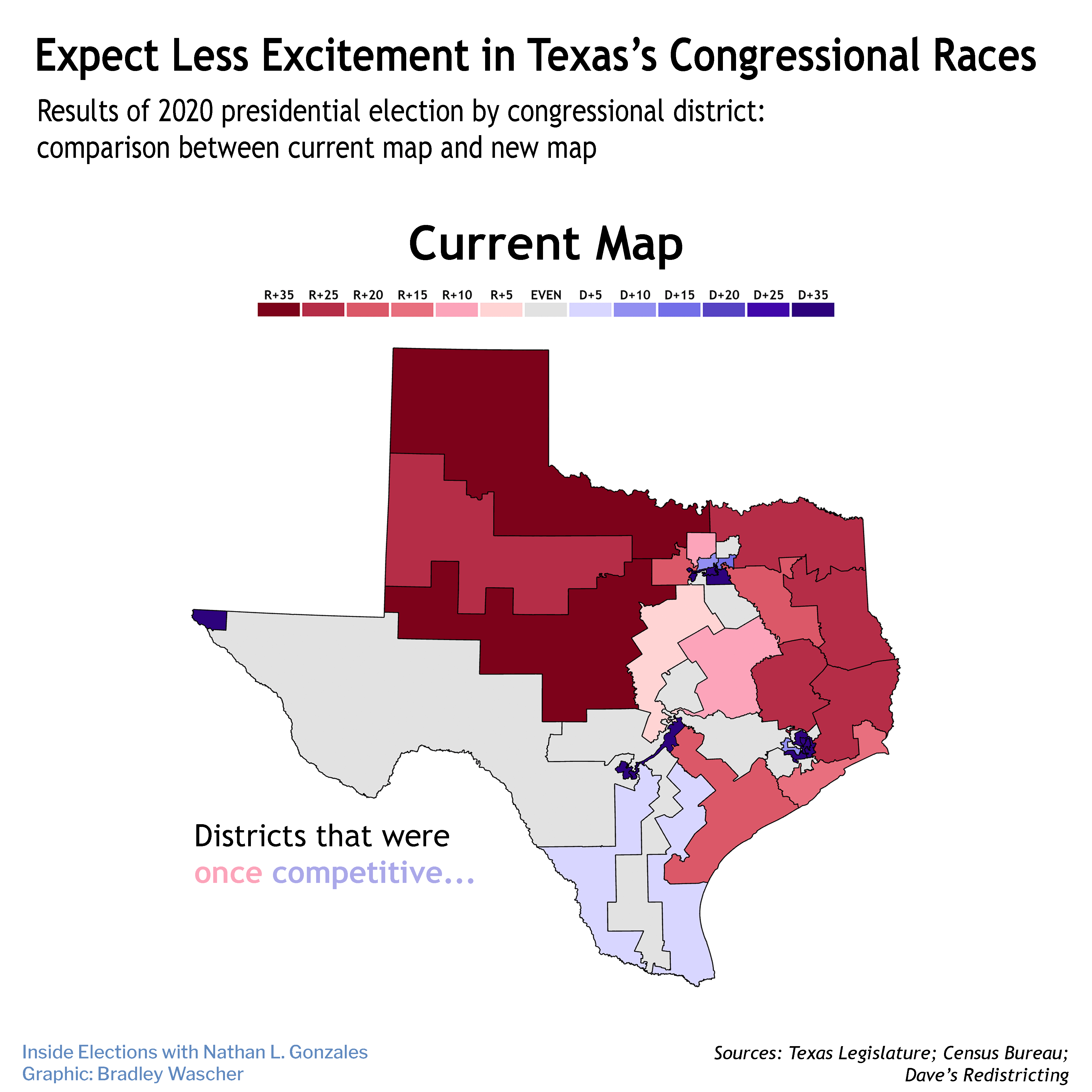
 One of the largest states in the country will host some of the fewest competitive House races over the next decade. By signing into law Texas’s new congressional map late last month, Republican Gov. Greg Abbott approved a plan that will likely make federal elections in the state much less exciting.
One of the largest states in the country will host some of the fewest competitive House races over the next decade. By signing into law Texas’s new congressional map late last month, Republican Gov. Greg Abbott approved a plan that will likely make federal elections in the state much less exciting.
Texas gained two new congressional districts as a result of census reapportionment, the only state this cycle to net more than one seat, increasing the size of its congressional delegation from 36 members to 38. One of the new districts, the 37th, will be located in Austin and is expected to vote dependably Democratic. The second new district, the 38th, will be located in the Houston suburbs and will vote reliably Republican.
As for the 36 other districts, the new map largely solidifies existing partisan preferences.
The Texas congressional delegation is currently made up of 23 Republicans and 13 Democrats. The new map creates 24 districts that are Republican-favored, 13 districts that are Democrat-favored, and one district where neither party has a clear advantage, according to the Inside Elections Baseline metric, which captures each party’s political performance in a congressional district by combining all federal and state election results over the past four election cycles into a single average. In the 2020 election in particular, President Donald Trump carried 22 districts under the current lines while Joe Biden won 14. Under the new lines, Trump would have carried 25 districts to Biden’s 13.
The most likely range of outcomes for the Texas delegation is a GOP net gain of a seat or two. A GOP win in the newly-drawn 15th District (potentially the only competitive race in the state) would take the current 23R-13D...

